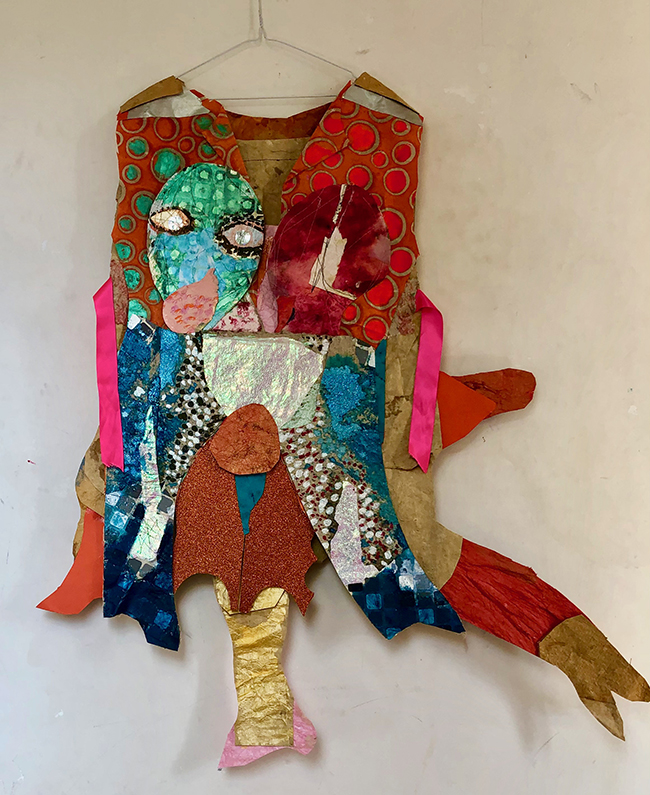Aliza Thomas lives between art and practice, between teaching and making, between her roots in Israel and her current life in the Netherlands. Her life cannot be pulled apart from her art—it is all connected. She is an artist and papermaker, yes, but also an art teacher, a practitioner of Qigong and Taijiquan, a mother, and a grandmother. Each of these roles feeds the others. They fold together into a way of living where creativity is not separate from daily life. For Thomas, art is not something she merely produces—it is something she inhabits.

Raised in Israel, Thomas brings with her the sense of cultural layering, of histories and identities intersecting. Moving to the Netherlands gave her a new landscape, one quieter and different in rhythm, yet equally rich in its influence. This blend of backgrounds has shaped her art, giving it both weight and delicacy. When she teaches, she draws from that experience of dual belonging. When she makes paper, she is touching the very material of continuity—fibers pulled together to form something durable yet fragile.
A Holistic Approach
To speak of Thomas as only an artist would be incomplete. She teaches Qigong and Taijiquan, traditions rooted in balance, flow, and energy. These practices bring her students into a deeper awareness of their own bodies and breath, and they inform her own artistic method. Paper, after all, is nothing if not flow made visible: pulp in water, strained, pressed, and dried into sheets that hold memory. The same attentiveness to movement and energy appears in her studio, where the slow rhythm of papermaking becomes a meditation.
Teaching art itself is another expression of this holistic approach. For Thomas, passing on knowledge is as important as creating new work. She sees teaching as part of the same continuum as motherhood and grandparenthood—a form of care, a way of keeping the thread unbroken. The classroom becomes an extension of the studio, and the studio becomes a place of teaching, even if no formal lesson is being given. This openness is what marks her presence as much as her paper.
The Paper Dress
Among her projects, the paper dress created for the paper fashion show in Jeonju, South Korea, stands out. It is both garment and sculpture, both surface and structure. Thomas offered the backside of the dress as an artwork in itself, drawing attention to what is often overlooked. The unseen becomes visible, and in that shift of perspective, the piece gains power. Fashion is usually about the front, the face, the display. Thomas turns the gaze around, insisting that the reverse side holds its own story.
This gesture speaks volumes about her philosophy. Art does not need to be dressed up or presented only from its most flattering angle. The raw, the hidden, the back of the canvas or the underside of the garment—these too are worthy of attention. By highlighting the backside of her paper dress, Thomas invites viewers to rethink value, beauty, and the assumptions we bring to objects. It is a small rebellion against convention, but a profound one.
Paper as Language
Papermaking is more than technique to Thomas—it is a language. Handmade paper carries textures, imperfections, and histories that manufactured paper cannot. It is responsive, sensitive to light, to moisture, to handling. Each sheet is a kind of skin, absorbing and recording. For an artist who lives with deep awareness of body and movement, it is a fitting medium. Paper connects the physical act of making with the intangible weight of meaning.
Her work with paper also reflects her attitude toward renewal. Thomas often reuses older works, breaking them down to make something new. This cycle of creation, destruction, and re-creation mirrors the rhythms of nature and of life itself. As a mother and grandmother, she has lived long enough to see how things return, how what is let go comes back in different forms. Paper embodies this truth with quiet honesty.

